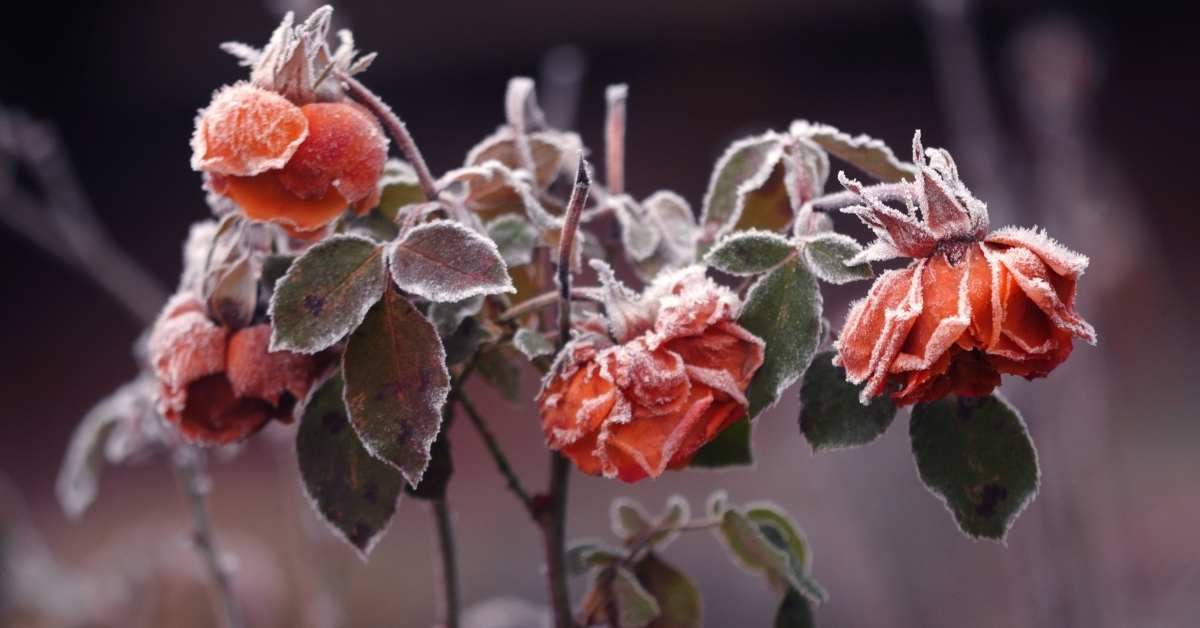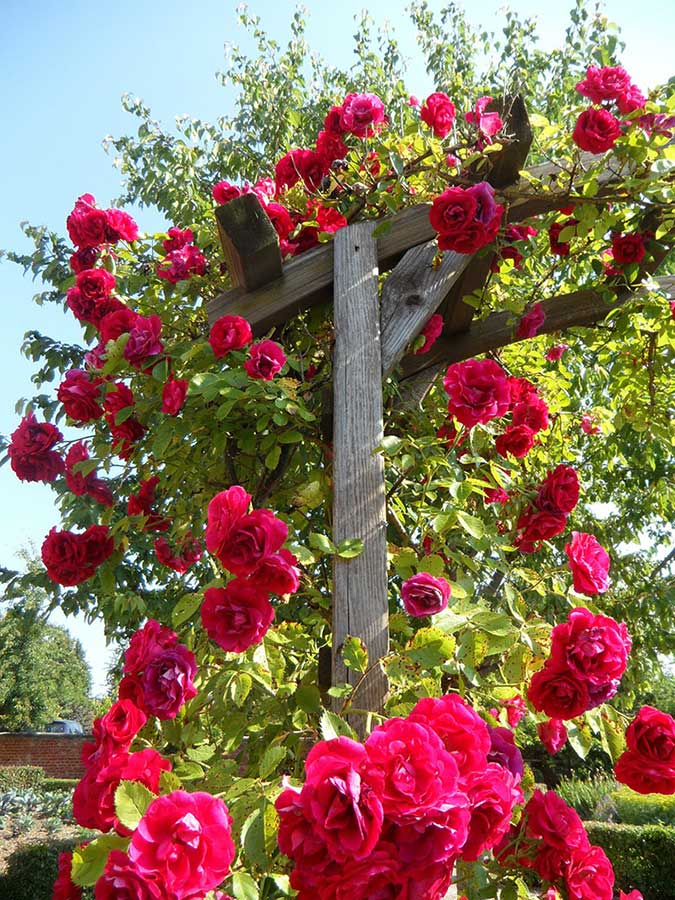The more care you provide your roses throughout the growing season, the more likely they will survive the winter. So, you need to know how to winterize roses for the upcoming cold days. If the plant lacks water or nutrients or is afflicted with a disease during the summer or autumn, it will be weakened when old man winter comes.
To prepare the plant for the winter season, remove any fallen leaves and debris from inside and around it.
The best approach to prepare your treasured roses is to ensure that they stop growing and become dormant before the coldest weather arrives. You may promote this in two ways, in my experience:
– Stop fertilizing six weeks before the first frost. I never fertilize my roses after August 1st (in Zone 5 in the Chicago area ).
– Let rose hips develop. Instead of cutting off or deadheading the spent flowers from late fall bloom, let the flowers go to seed. While their seeds develop, most plants slow down their growth.
You want to protect your rose not just from the cold but also from drying winds and changing temperatures, which may cause plants to freeze, thaw, refreeze, and thaw again, creating a vicious cycle for plants. If you reside in an area where cold periods are alternated with mild times, I don’t suggest doing any autumn pruning.
(This has been increasingly common in my region in recent years.) Trimming encourages growth, and if roses come out of dormancy, delicate buds may appear.

4 Easy Steps to Winterize Roses:
1. Make sure your plants are properly hydrated. Fall rains generally suffice, but if the weather has been dry, water thoroughly to a depth of approximately 18 inches after the first frost but before the ground freezes in the winter.
2. In early to mid-fall, when the nights are getting regularly frosty, mound several spadefuls of soil over the plant base, extending the soil up at least a foot above the bud union. (Before I do this, I remove all fallen leaves and debris from within and around the plant)
Don’t worry about the canes above the mound; you’ll be cutting those back in the spring anyway. Get the soil from somewhere else, not around your roses. Sometimes I buy a bag at the local garden center to do the job if I don’t have enough elsewhere in the yard.
3. Cover the mound with a heavy layer of mulch, such as straw, leaves, or compost, after the ground has completely frozen.
This helps ensure the ground remains frozen. If any leaves remain on the plant, you can remove them. Leaves can harbor disease and dry out the plant. Wire mesh or tied newspaper can keep the protective material in place. You can buy styrofoam or plastic cones, but I’ve never been a big fan of those.
4. When the ground begins to thaw in the spring, gently start removing the soil from the base of the plant.
I usually wait until I see the yellow blooms of the forsythia before I unwrap my roses. You don’t want to start too early – a sudden cold snap can be brutal. To avoid breaking fresh buds, remove the dirt gently and carefully.
Winterizing Climbing Roses and Tree Roses:

These types of roses need special protection since they are more upright and thus more exposed to wind and cold. If the rose is attached to a trellis and the canes are stiff, untie them and wrap them in insulating material (similar to how pipes are wrapped to prevent them from freezing). Then secure them to the trellis to keep them safe.
Dig up tree roses (or move the potted ones) and store them for winter in a cool garage or basement. Or dig up only one side of the tree roses’ roots so that it can lie on its side. Then secure with stakes and cover the whole thing with soil and mulch. See diagram on the left.
The harsher your winters, the more you’ll need to worry about winter protection for your roses. Unfortunately, some roses are doomed no matter what protection method you choose.
The following are the three most common reasons for rose mortality in the winter:
- Choose roses that aren’t hardy in your climate. (Don’t expect a Zone 6+ rose to survive the winter if you reside in Zone 4).
- A budded rose is planted with the bud union above the soil level. (See the Rose Planting Section for Details)
- Getting rocked loose by high winds. Tall rosebushes are most vulnerable to this. I’ve never experienced this, but I know gardeners who have, especially if they haven’t secured their climbing roses.
My best advice to protect your precious plants is to follow the above steps. Stop deadheading spent blooms in September. Stop fertilizing your roses in August. This will assist your roses in settling down for a long winter’s sleep!


